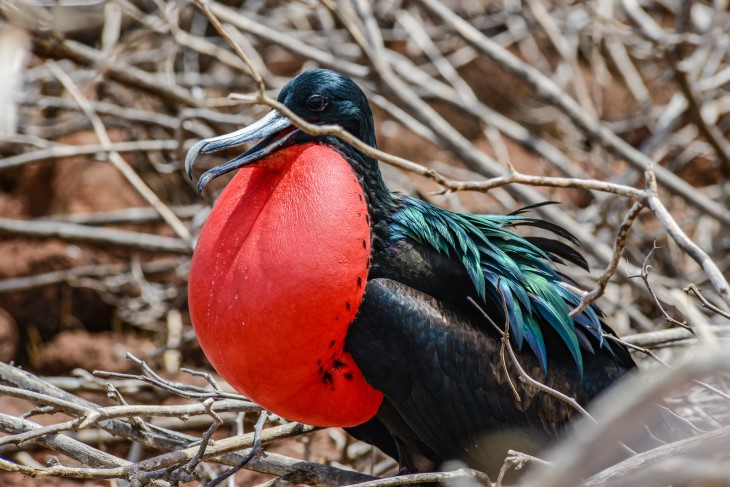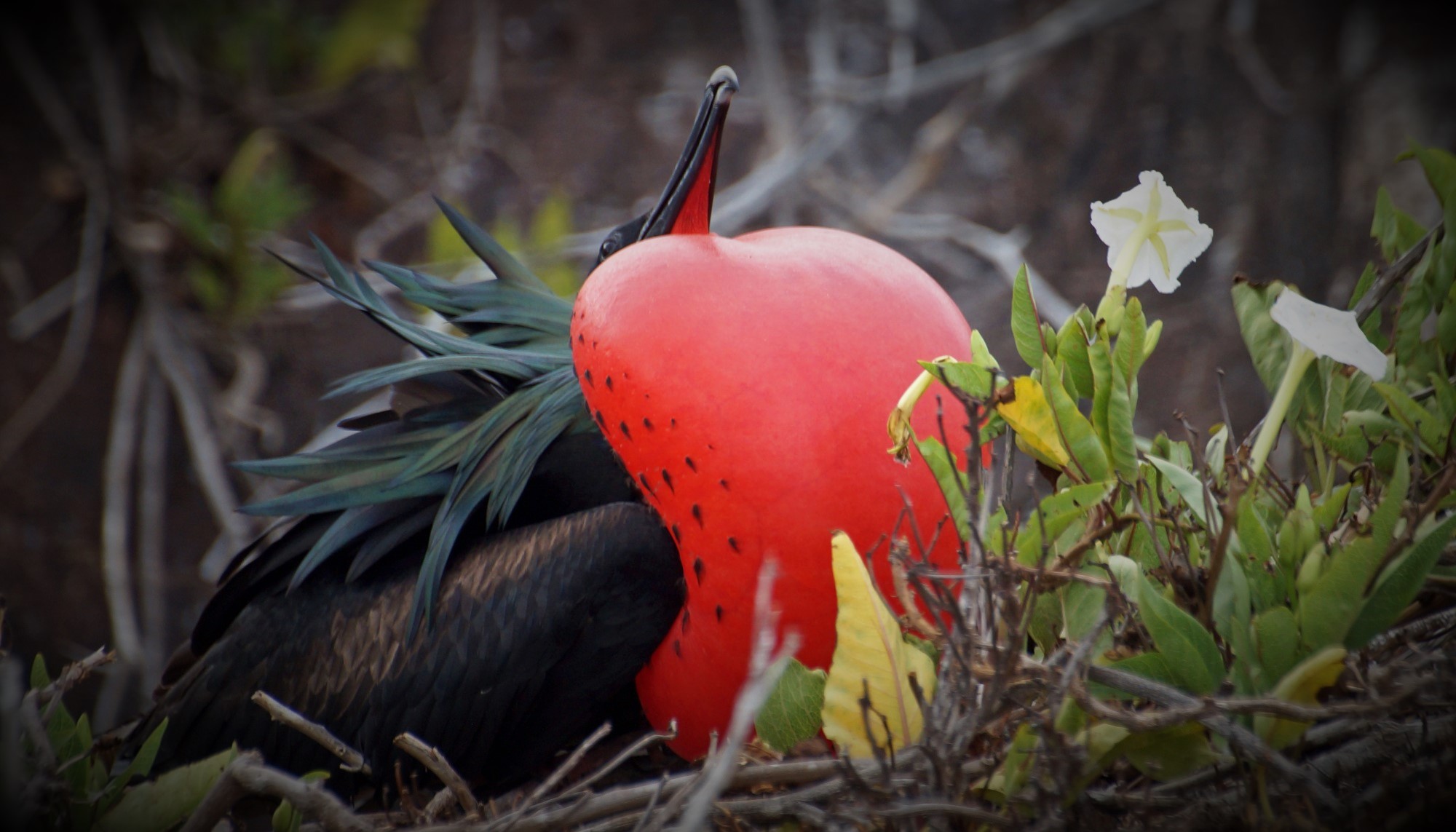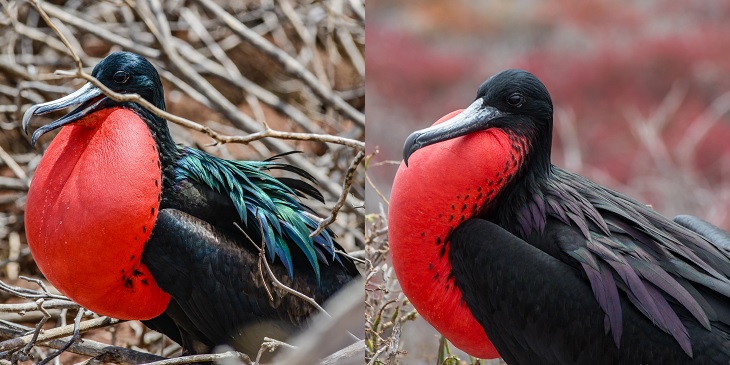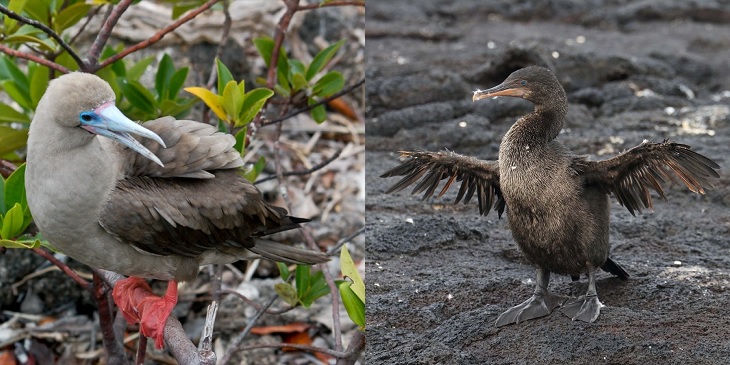
SIGN UP TO RECEIVE
15% OFF
IN YOUR NEXT TOUR

Suliformes birds of the Galapagos

Suliformes birds of the Galapagos
SCROLL DOWN TO READ
Suliformes birds of the Galapagos
The order Suliformes contains five families (one of them extinct), three of which are found in the Galapagos. Collectively called sulids, Suliformes is a relatively new order and didn't exist before. The families in Suliformes were once all classified under pelecaniformes as birds with webbed-feet and four toes. However, after intensive studies and genetic comparisons, it was evident that some families of the previous pelecaniformes order, were actually not all that closely related to the pelicans and, were therefore extracted and given their own order. Some unique characteristics of the Suliformes can be seen in the chicks, which hatch naked and are thus extremely dependent on their parents. Additionally, the nostrils of these birds are often sealed or otherwise protected as an adaptation for diving, a common means of hunting in this order. The order Suliformes conventionally contains the following families:

The order Suliformes includes many of the seabirds found in the Galápagos. Boobies, cormorants and frigate birds are all members of this group, comprised six species commonly observed because they nest in the archipelago, although not all of them are endemic to the islands. In the Galapagos, these include two species of frigate bird, three species of booby, and the flightless cormorant. There are no gannets in the Galapagos, nor anhingas nor darters.
In the Galapagos Islands, all Suliformes are relatively large birds: they range in length from about 70 cm (28 in) in length and with a wingspan of up to 1 m (3 ft 3 in), in the red footed booby to 89–114 cm (35–45 in) in length and with a wingspan of 2.17–2.44 m (7.1–8.0 ft) in the magnificent frigatebird. In terms of their way of life, the Suliformes birds fall into three adaptive groups: the frigate birds are long-winged masters of piracy and aerial pursuit of surface-living marine prey; the boobies are wide-ranging flyers that capture prey underwater by plunging from a height and the cormorants are heavy-bodied, long-necked, underwater swimmers, respectively pursuing and lying in wait for their prey below the surface.

Like the rest of marine birds, the Suliformes have a salt gland (usually inside the head in between the two eye sockets) that allows them to drink salt water. The eyes face forward, allowing them binocular vision; this makes them more efficient predators, better able to judge distances. This feature also giving them a distinctly goofy look beak-on. Finally, an oil gland that allows them to be resistant to water when diving or swimming; of course, this gland is no longer found in the cormorant and in small proportions in the frigates, which are the only ones of the order Suliformes, that do not swim.
All these birds have a structure called the furcula (or wishbone). The furcula is a springy, v-shaped bone, that helps raise the wing during the up-stroke. On the down-stroke the furcula is stretched and then, when the wing relaxes, the furcula snaps back and helps push the wing up. The arms of the furcula are attached to the shoulder and the fused tip of the V is suspended above the breast bone. Suliformes (of course, except for the flightless cormorant) however, are primarily gliders and do not flap frequently. In these birds, the v tip of the furcula is solidly fused to the breast bone and the arms are much more sturdily built to help support the wings.
The gular sac is most highly developed in frigatebirds but is also very obvious in boobies and cormorants. In frigate birds it is used as a mating display. When observing boobies and cormorants, it is not unusual to see their sacs somewhat extended and fluttering back and forth (gular fluttering). Gular fluttering in birds is the equivalent of panting in mammals and these poor birds, often sitting on a nest in the hot sun, are trying to shed excess heat.

During courtship, the female selects the mate instead the male typically selects a nest site and then displays from this site to passing females. In the male advertising display of boobies (“sky-pointing”) and of cormorants (“wing-waving”), the head and tail are raised and the wings partially raised. The boobies have species-specific positions of the wings and tail. In most Suliformes, when a female has finally joined a male at the nest site, he may go and fetch nest material, which is then added to the nest structure by the female, alone or with the assistance of the male. Copulation normally occurs on the nest site, without any special pre-copulatory or post-copulatory displays. The pair-bond, once established, is reinforced by such activities as joint nest building and defense and preening of one bird by the other.
